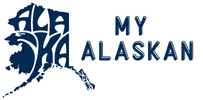Gold mining is not just a part of Alaska’s past, but is still an important activity in many
areas of the state. You might like to try your hand at finding some of the precious metal. A U.S.
Geological Survey bulletin 1786, “Significant Metalliferous Lode Deposits and Placer Districts of
Alaska.” describes all of the locations throughout the state of Alaska where metallic minerals have
been found. Recreational gold panning and prospecting is permitted, with some restrictions, on
most public lands in Alaska. These lands include national forests, wildlife refuges, some state
parks, national parks (more restricted), and lands administrated by the Bureau of Land
Management and the State of Alaska. On private lands or mining claims, the owner s permission
is needed to mine even if you are just gold panning. Alaska Native village and corporation lands
are private.
LAND STATUS
It is not easy to determine where on public lands recreational gold mining is possible and
permitted. You must always check on the status of the land before beginning your activities. If
you are unsure of the status of a particular area, check with the federal Bureau of Land
Management. They maintain the most up-to-date maps and information on land status, but you
will need to know the exact location of the land in which you are interested; meridian, township,
and range, and sometimes section. In Alaska, there is still land with undetermined status pending
state and Native corporation claims settlements. For this reason, it is not possible for accurate
maps to be widely available.
To determine if an area is open to mineral entry and if there are legal mining claims in an
area, contact the state Division of Mining or, for claims on federal lands, the Bureau of Land
Management. Once you have determined land status, know that it is public land, that it is open to
mineral entry, and that it has no legal claims, check with the managing agency to determine what
restrictions might be in force. In many areas, suction dredges are prohibited in order to protect
streams.
If you wish to mine on someone else’s legal claim, you must first have the permission of
the claimant. They may refuse permission because they are busy and/or because of concern about
liability in case of injury or vehicle problems or damage. You may take part in other activities
such as hiking, camping, or berry picking on mining claims as long as you do not disturb the
equipment or operations. As a recreational miner without a claim, you do not have the right to
prevent anyone from looking for gold in a particular area.
If you want to file a mining claim, check with the Bureau of Land Management or the
State Division of Mining depending on who manages the land of interest.
EQUIPMENT
In most cases, only the use of gold pans, shovels, pry bars and pick, and manually-fed
sluice boxes and rocker boxes is allowed in streams on public lands without a permit or
authorization. In Chugach and Kenai Peninsula State Parks, the only state parks which are
presently open to any recreational mining activity, an individual is limited to one gold pan, one
shovel, and one sluice box which is 3 feet or less in length and 15 inches in width. In national
parks and preserves, only surface sampling with a hand-held gold pan is allowed. No digging
tools are permitted.
Regardless of land status, the use of motorized earth-moving equipment, hydraulic
mining either by gravity or mechanical methods or the use of chemicals is not permitted by
recreational miners. Motorized vehicles are limited to existing roads and some trails. In certain situations,
trails and some river outwash plains may be open for official travel. Sometimes off-road vehicles
permits are required for cross-country travel. Check with the agency in the area of interest.
